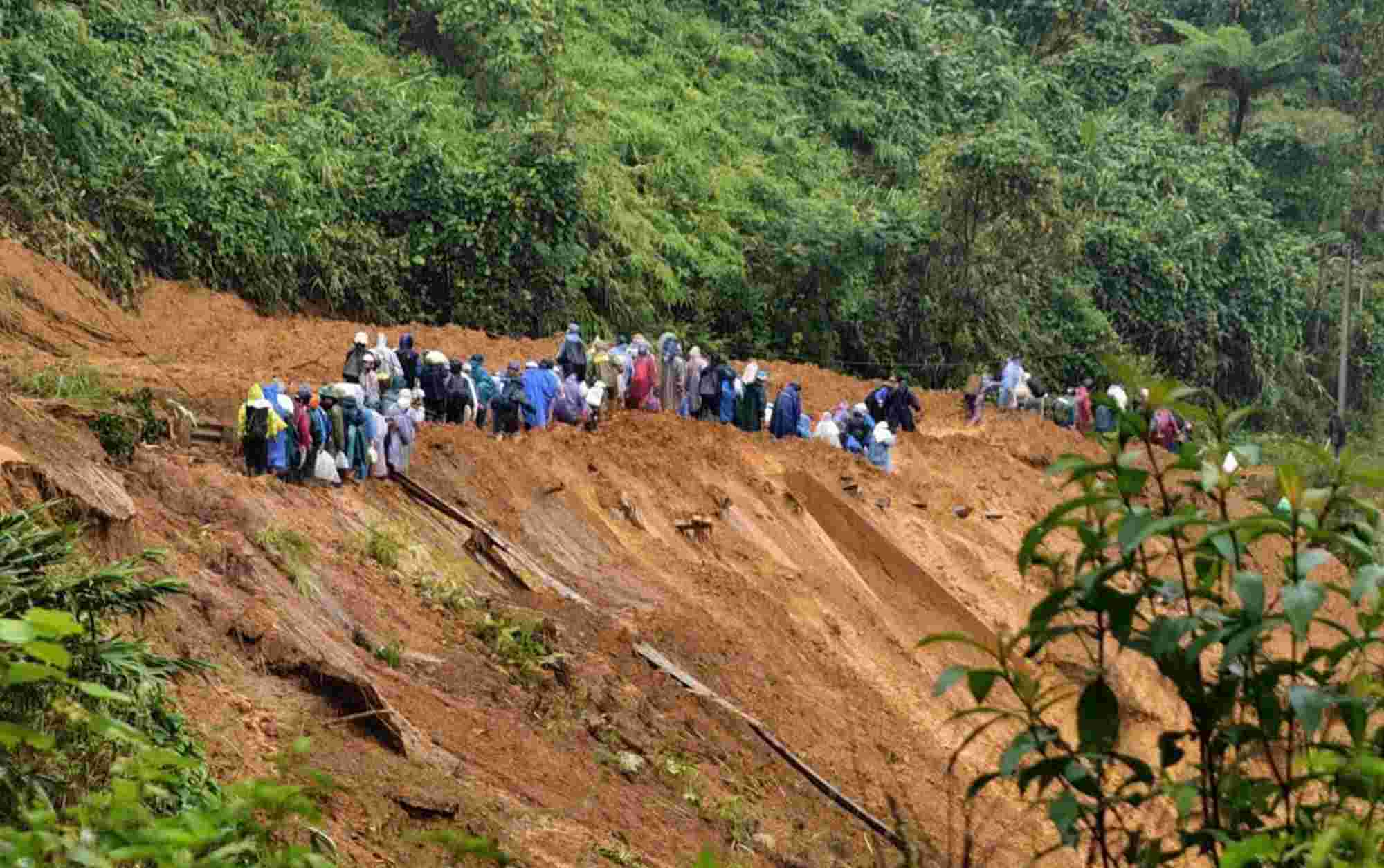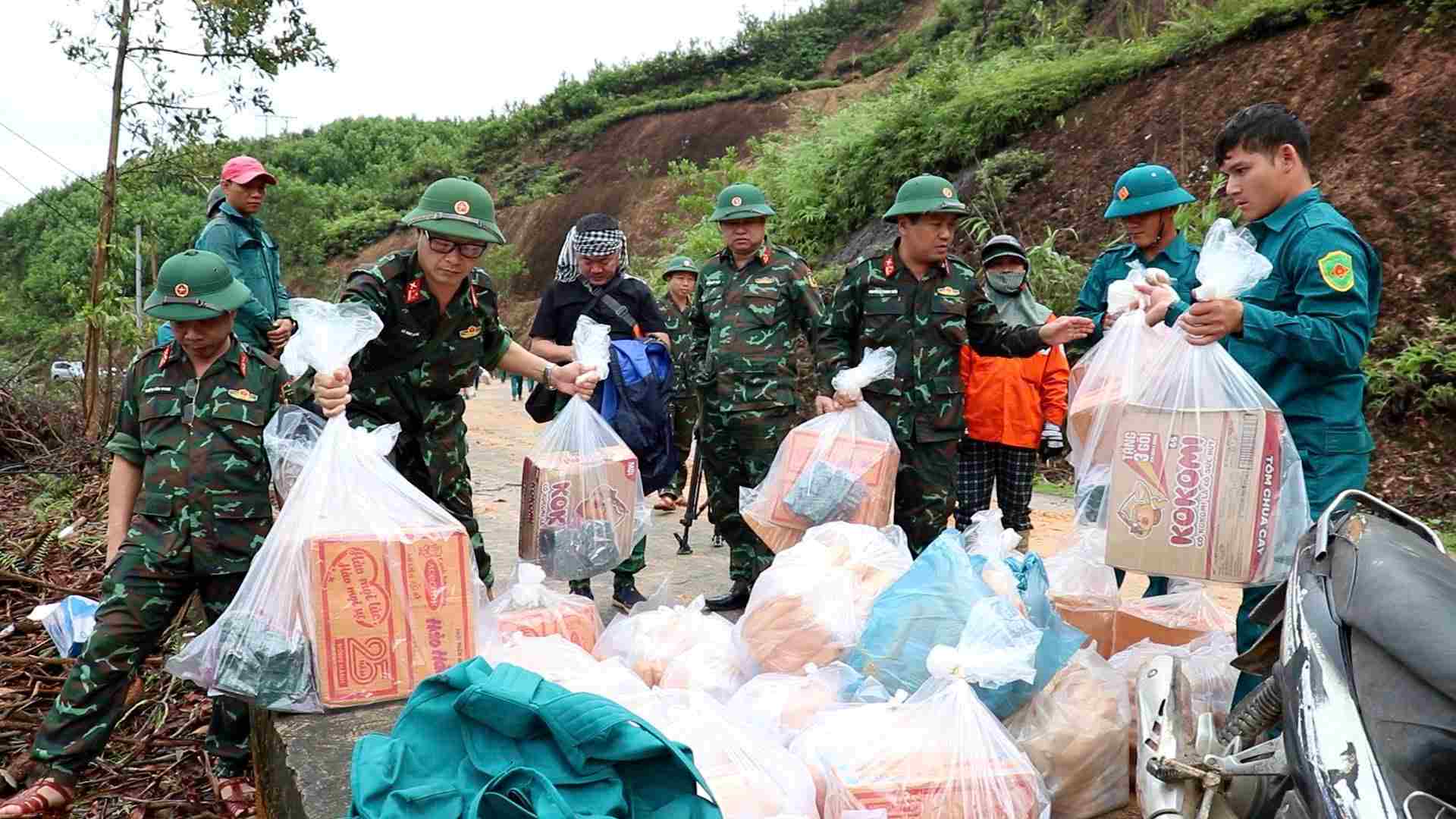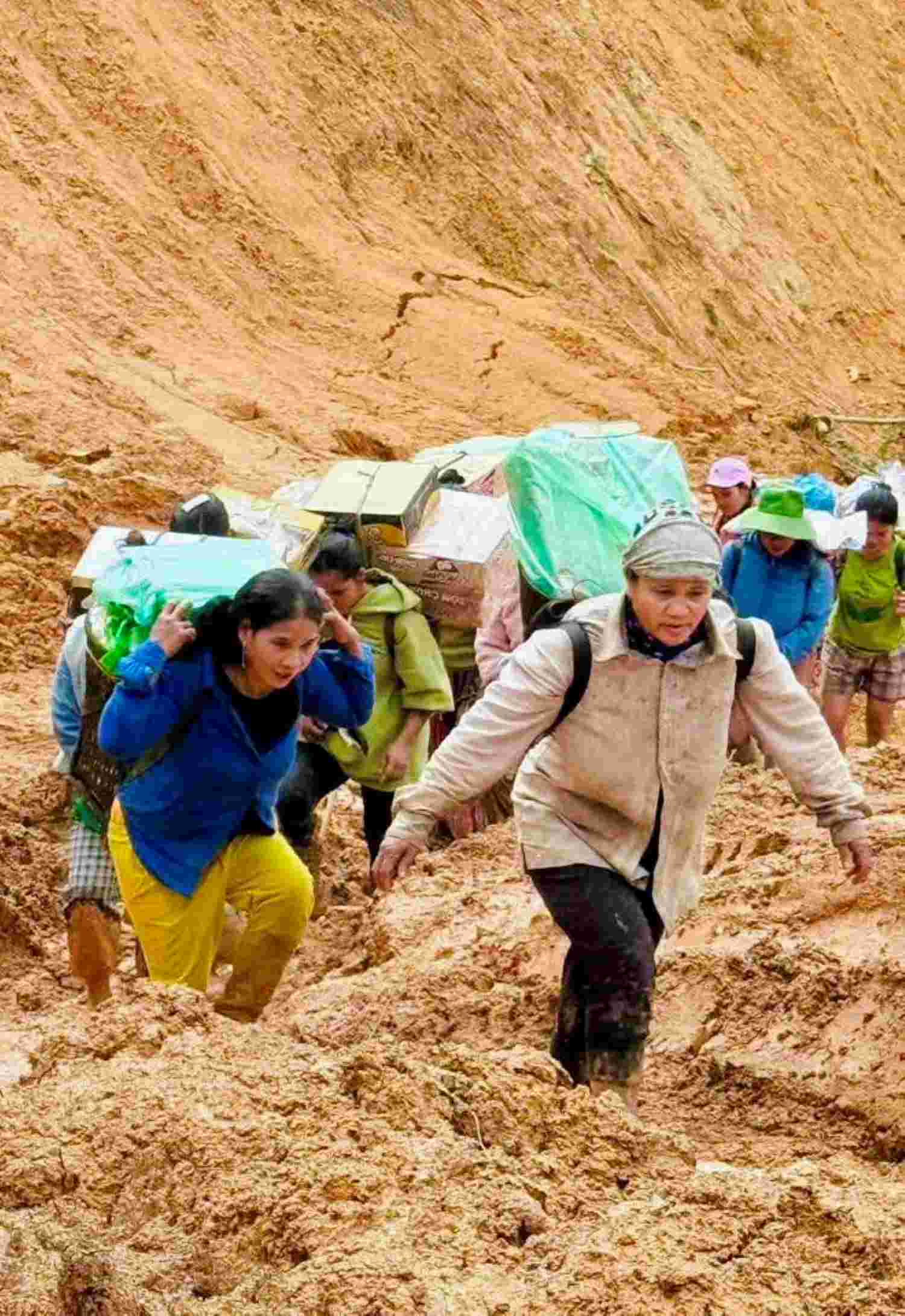Proactively worrying about food amid landslides and flash floods
sweat and wet rainwater covered his shirt, Mr. Ho Van Doi, a resident of Tu Nuong village, Tra Tap commune (Da Nang) still thoughtfully pushed away each block of landslide, his eyes not leaving the muddy road that had just been cleared. "How long will the commune delegation be?" - he asked, his voice was a bit worried. For more than a week now, serious landslides have caused the village (54 households with more than 270 people) to be cut off, with food reserves of only a few cans of rice and a few dried potatoes.
When the relief team of Tra Tap commune appeared, bags of rice, fish sauce, and instant noodles were passed by hand across the landslide cliff. Mr. Doi hugged the bag of rice, smiled and mixed it with the rainwater: "Before the rain, I had time to harvest rice to save, but the rain in a few more days was not enough. Now that the commune has brought rice, fish sauce, and salt, the people are much more assured".
Chairman of Tra Tap Commune People's Committee - Mr. Le Trung Thuc shared that the commune has proactively promoted people to harvest crops early and reserve food before the rainy season. Thanks to proactiveness, no one is hungry. When the food is gone, we take advantage of the rice cooking source of the boarding school, temporarily provide it to the people and then buy it back later."
From this experience, the commune continued to provide dozens of tons of rice to more than 8,000 people to prevent heavy rain and storm No. 13. A mountainous commune, amidst the landslides, has become a bright spot in the proactive spirit of "4 on-site".
At the same time, in the low-lying areas of Hoa Tien and Cam Le, hundreds of union members divided into groups to clear mud, repair corrugated iron roofs, and clear sewers. The police and the army built temporary bridges and used drones to transfer relief goods to the isolated point. Da Nang and Military Region 5 have mobilized more than 36,000 people, hundreds of vehicles, and evacuated nearly 16,000 people from the danger zone.
Efforts to recover after natural disasters
Currently, many relics, hospitals, and schools in Hue City have reopened. The Center for Monuments Conservation of the Ancient Capital fences off and warns of the Imperial Citadel area where the wall collapsed about 15m long to ensure safety.
At the Children's Center - Hue Central Hospital, Mr. Phung Nhat Phi (30 years old, Quang Tri) went on a journey of more than 100km to take his 2-month-old daughter to Hue for emergency treatment for severe pneumonia, surrounded by floodwaters. At that time, 32/40 communes and wards in Hue were deeply flooded, water overflowed into the hospital grounds, but doctors and nurses were still on duty 24/7, promptly receiving and treating. After 3 days of active intervention, Phung H. V. was out of danger and in stable health.
Director of Hue Central Hospital Pham Nhu Hiep said that from October 27, prolonged heavy rain caused the river water to rise rapidly, overflowing into facility 1. By the afternoon, many departments such as Dermatology, Tropical Diseases, Lung Diseases, Neurology, Dentistry, and Cardiology were deeply flooded. The hospital activated an emergency flood prevention plan according to the "4 on-site" motto, mobilizing hundreds of staff to evacuate patients, raise machinery, protect records, and ensure continuous electricity and oxygen.
Head nurse Nguyen Thi Tra My (Department of Tropical Diseases) said that the water rose very quickly, so the staff had to hold and push the patient up to the upper floor, reassuring the elderly and people breathing oxygen so that treatment would not be interrupted. As soon as the water recedes, the hospital disinfects, cleans, and treats drainage to prevent epidemics after floods.
The recent floods have caused 7 commune health stations and 4 hospitals and centers under the Hue Department of Health to be flooded; 25 other facilities were flooded with yards, access roads... making it difficult to examine and treat diseases. In Da Nang, more than 123,000 households were flooded; 74,194 wells, more than 118,000 toilets, 263 public areas, 191 schools and 43 medical facilities need to be treated, disinfected, and the environment is clean. Some hospitals and medical stations were flooded more than 1m deep. Up to now, medical examination and treatment activities in these two localities have been basically stable, continuing to monitor the weather and proactively respond.
According to Ms. Dang Thi Duong - President of the Hue Women's Union - most of the members suffered heavy damage, but the enterprise was still proactive in both overcoming and maintaining production. For example, the frozen warehouse of Linh Vy Food Trading and Service Company Limited was deeply flooded, causing the destruction of about 17-18 tons of goods, the rest were temporarily transferred to Thuan An for preservation.
Nearly half of educational institutions in Hue, Da Nang, and Quang Ngai have resumed teaching and learning. Schools that are still flooded continue to clean up, "where the water recedes, cleaning will be done" to soon welcome students.



Proactively responding to storms and floods
After more than a week of floods, the damage in Da Nang City amounted to more than 837 billion VND, 14 people died, 4 people were missing, thousands of hectares of crops and seafood were swept away. The whole city has 7 national highways and 20 provincial roads that have been eroded and are congested.
In Quang Ngai, the estimated damage is about 314 billion VND, there are still hundreds of households in mountainous communes such as Son Tay, Ba To, Tra Bong, Ngoc Linh, Dak Plo, Dak P Mek... whose trade activities have been stalled, greatly affecting their lives and production.
From November 3, floods on the rivers of the Central region from Ha Tinh, Quang Tri, Hue, Da Nang and Quang Ngai will all rise again. In many places, this is the fourth time people have had to clean up floods. People in mountainous and low-lying areas shared rice and wrapped it, workers clinging to the road in the rain to clear the route, the government, the Army, and the volunteer shock forces did not sleep to "keep the people, keep the road, and keep safety".
As of November 4, many vital routes are still congested, but thanks to the efforts of traffic forces, the Army and local authorities, each landslide point is gradually being overcome, temporarily opening a lane to resume traffic, communication, supplying food, drinking water, and medicine to the people.
Nha Trang continues to be severely flooded
Consecutive heavy rains caused many central streets of Nha Trang to be deeply flooded, traffic paralyzed, and people's lives were turned upside down. The flooding situation in the downstream area of Cai River is increasingly serious, posing an urgent need for a comprehensive solution in planning, managing and investing in flood prevention works.
In October 2025, prolonged heavy rains caused water levels to rise, flooding many key routes. In Bac Nha Trang ward, roads such as 2 Thang 4, Ngo Den, Dien Bien Phu, Nguyen Khuyen, Hon Chong... were flooded from 40 - 60cm deep. This incident made it very difficult for people to travel, many motorbikes stalled in the middle of the road.
In Nam Nha Trang ward, heavy rain caused water levels to rise in many areas such as To Huu and Thich Quang Duc streets, alleys 46-48 Tan An, 20 and 34 Le Hong Phong, and alleys in Residential Group 6 Phuoc Loc. In addition, the locality also recorded nearly 20 points at risk of landslides.
Mr. Nguyen Duy Quang - Director of the Department of Agriculture and Environment, Deputy Head of the Khanh Hoa Provincial Civil Defense Command - said: The flooding situation in the downstream area, especially in the communes along Nha Trang, has increased in recent years in both time and scope of impact.
According to Mr. Quang, the cause comes from many resonating factors. First of all, the clear impact of climate change with widespread heavy rains, the intensity and frequency far exceeding the average of many years. The concentrated rainfall in a short period of time caused sudden floods, while the drainage capacity of the downstream area was limited...
To limit flooding in the downstream area of Cai River, it is necessary to implement both non-professional solutions and project solutions.
Regarding the pilot project, focus on planting and protecting upstream forests and protective forests; reasonably regulate works in the Cai River basin such as Song Cho 1 Lake, Suoi Dau Lake, Dac Loc Lake, Cai Nha Trang River mangrove dams. At the same time, implementing comprehensive management of river basins, linking socio-economic development with environmental protection and natural disaster prevention...
Regarding construction solutions, the province is speeding up the completion and putting into use key projects with flood regulation effects such as Song Co 1 reservoir and Cai Nha Trang river mangrove dam (expected to be completed by the end of 2025). When put into operation, these projects will act as a natural "flow control" to reduce the risk of flooding for residential areas along the river.
At the same time, it is necessary to invest in completing the main embankment and flood drainage system such as the Tac River downstream treatment project (phase 2), Cai River embankment section through Xuan Phong village (Vinh Phuong commune), Bac Dien Khanh (old) embankment and embankment - road along the southern bank of Cai River through Dien An commune (old).
The province is studying the implementation of the Flood drainage project in the western area of Nha Trang and the project to renovate, renovate and develop tourism - services along the Quan Truong and Tac rivers, invested by the Khanh Hoa Provincial Development Project Management Board.
Huu Long











